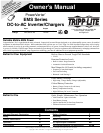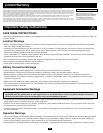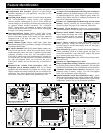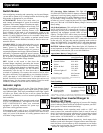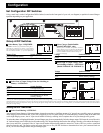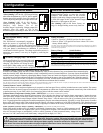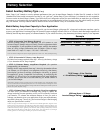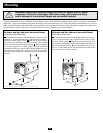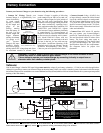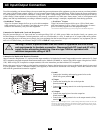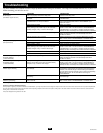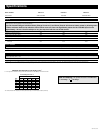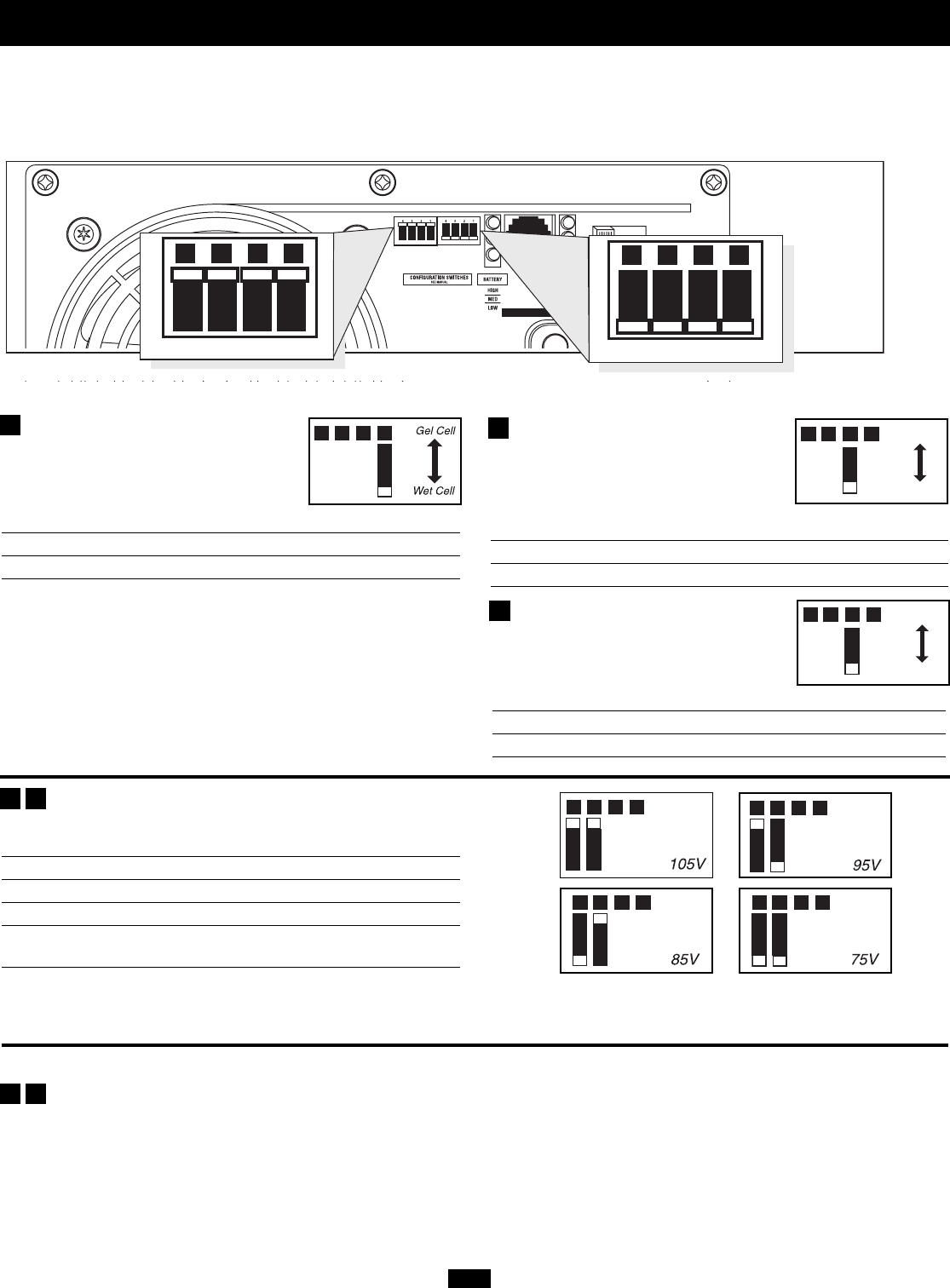
5E
Configuration
Select Battery Type—REQUIRED
CAUTION: The Battery Type DIP Switch setting must
match the type of batteries you connect, or your batteries
may be degraded or damaged over an extended period of
time. See “Battery Selection,” p. 7 for more information.
Battery Type Switch Position
Gel Cell (Sealed) Battery Up
Wet Cell (Vented) Battery Down (factory setting)
Select Charger Enable/Inhibit
(Model EMS1250UL only)
Switch is preset to ENABLE, which permits continuous
battery charging. If you are connecting the EMS1250UL
to batteries with a separate charger, you may set this
switch to INHIBIT to disable its built-in charger to
prevent overcharging.
Voltage Switch Position
Inhibit Up
Enable Down (factory setting)
Set Configuration DIP Switches
Using a small tool, set the Configuration DIP Switches (located on the front panel of your unit, see diagram) to optimize Inverter/Charger
operation depending on your application.
A1A2A3A4
INPUT C/B 10A
OUTPUT C/B 12A
B4 B3 B2 B1
A4 A3 A2 A1
Group B Dip Switches
Group A Dip Switches
Group A DIP Switches
Select Low AC Input Voltage Point for Switching to
Battery—OPTIONAL*
Voltage Switch Position
105V #A4 Up & #A3 Up
95V #A4 Up & #A3 Down
85V #A4 Down & #A3 Up
75V #A4 Down & #A3 Down
(factory setting)
* Most of your connected equipment will perform adequately when your Inverter/Charger’s High AC Input Voltage Point (DIP Switch #2 of Group A) is set to 135V and its Low AC Voltage Input
Point (DIP Switches #3 and #4 of Group A) are set to 95V. However, if the unit frequently switches to battery power due to momentary high/low line voltage swings that would have little effect on equip-
ment operation, you may wish to adjust these settings. By increasing the High AC Voltage Point and/or decreasing the Low AC Voltage Point, you will reduce the number of times your unit switches to
battery due to voltage swings.
Group B DIP Switches
Select Load Sharing—OPTIONAL
Your Inverter/Charger features a high-output battery charger that can draw a significant amount of AC power from your utility source or generator
when charging at its maximum rate. If your unit is supplying its full AC power rating to its connected heavy electrical loads at the same time
as this high charging occurs, the AC input circuit breaker could trip, resulting in the complete shut off of pass-through utility power.
To reduce the chance of tripping this breaker, Inverter/Chargers may be set to automatically limit the charger output. This keeps the sum of the unit’s
AC load and charge power within the circuit breaker rating. This charger-limiting function has four settings, allowing you to reduce the charger’s
draw lower and lower, as needed, if the AC input circuit breaker keeps tripping under the normal AC loads of devices you have connected
downline from the unit. The figures on the next page show how to set your DIP Switches to determine how heavy the connected load can
be on your Inverter/Charger before charger-limiting begins.
A1A2A3A4
A1A2A3A4
A1A2A3A4
A1A2A3A4
A1
A2
A3
A4
B2
B1
A1A2A3A4
ENABL
E
INHIBIT
Select High AC Input Voltage Point
for Switching to Battery—OPTIONAL*
(Models EMS1012UL & EMS2012UL)
Voltage Switch Position
145V Up
135V Down (factory setting)
A1A2A3A4
135V
145V
A2



